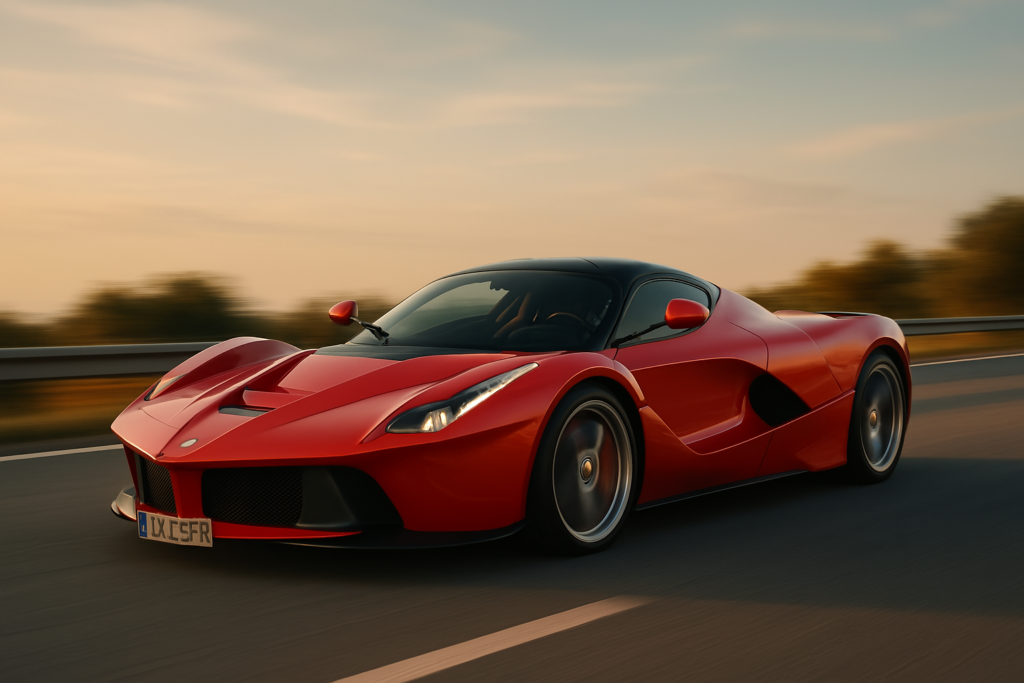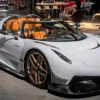From the thunderous roar of a V12 engine to the cutting-edge silence of an all-electric drivetrain, supercars have long embodied the pinnacle of automotive obsession. They’re not just machines—they’re rolling works of art, feats of engineering, and status symbols that stir something primal in the hearts of car enthusiasts.
What Makes a Supercar “Super”?
Speed is just the beginning.
Supercars are defined by their relentless pursuit of performance. They blend explosive acceleration, hair-raising top speeds, surgical handling, and avant-garde design into one exhilarating package. These cars often sport exotic materials like carbon fiber and titanium, and they’re built with the kind of attention to detail usually reserved for spacecraft or fine Swiss watches.
Under the hood—or, increasingly, beneath sculpted rear decks—lie engines capable of pushing past 200 mph. Whether it’s a screaming Lamborghini V10, a howling Ferrari V8, or the warp-speed electric propulsion of a Rimac Nevera, every supercar is engineered to ignite adrenaline.
A Brief History of Speed
The roots of the supercar trace back to the 1960s with legends like the Lamborghini Miura, often dubbed the first true supercar. Its mid-engine layout and radical looks redefined what a sports car could be. From there, the race for supremacy accelerated:
- 1980s: The Ferrari F40, with its twin-turbo V8 and raw, racecar-like feel, became a poster child of the era.
- 1990s: The McLaren F1 shattered expectations—and speed records—with a central driving position and gold-lined engine bay.
- 2000s–Present: Bugatti’s Veyron broke the 250 mph barrier. Koenigsegg, Pagani, and now electric titans like Tesla and Rimac push performance into uncharted territory.
Modern Marvels: Tech Meets Power
Today’s supercars are smarter than ever. Adaptive suspension systems, active aerodynamics, and AI-assisted driving modes make these beasts more controllable and versatile. Hybrid systems (like in the Ferrari SF90 Stradale or McLaren Artura) deliver mind-blowing acceleration with reduced emissions. And EVs? They’ve rewritten the rules entirely.
Take the Lotus Evija or the Pininfarina Battista—electric supercars that deliver over 1,900 horsepower with instant torque and zero tailpipe emissions. They’re not the future. They’re the now.
More Than Just Machines
Supercars are about emotion. They’re about stepping into something that defies logic, that turns a quiet morning drive into an operatic experience. They’re also cultural icons—appearing in movies, music videos, and the garages of the rich and famous.
But for many, it’s not about the wealth or fame. It’s about the dream. That moment when a low-slung silhouette tears past, echoing off canyon walls or city streets, and you can’t help but stare.
The Road Ahead
As the world shifts toward sustainability, the definition of a supercar is evolving. Electrification is no longer a compromise; it’s a new frontier. Performance, it turns out, doesn’t have to come at the planet’s expense.
Whether gasoline-fueled or electron-driven, supercars will always represent humanity’s unyielding desire to go faster, push harder, and build the impossible.


